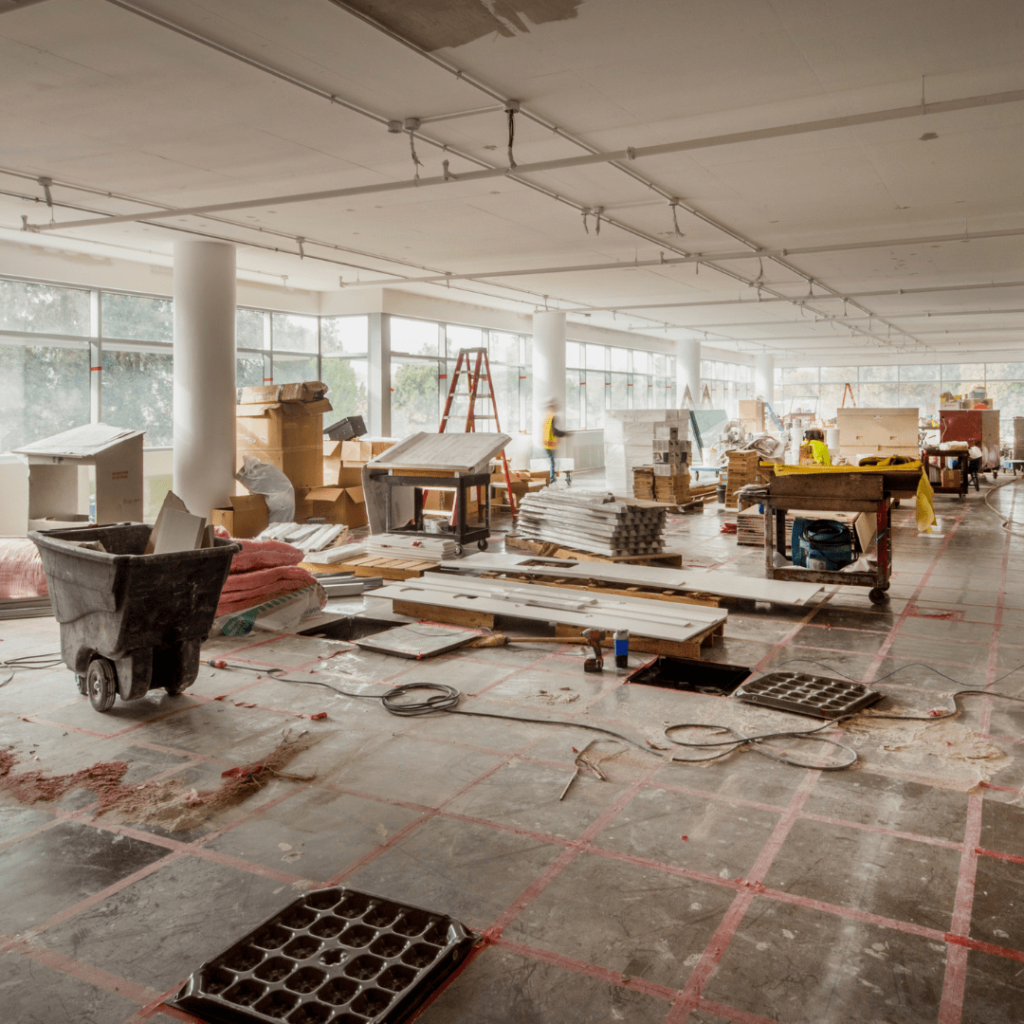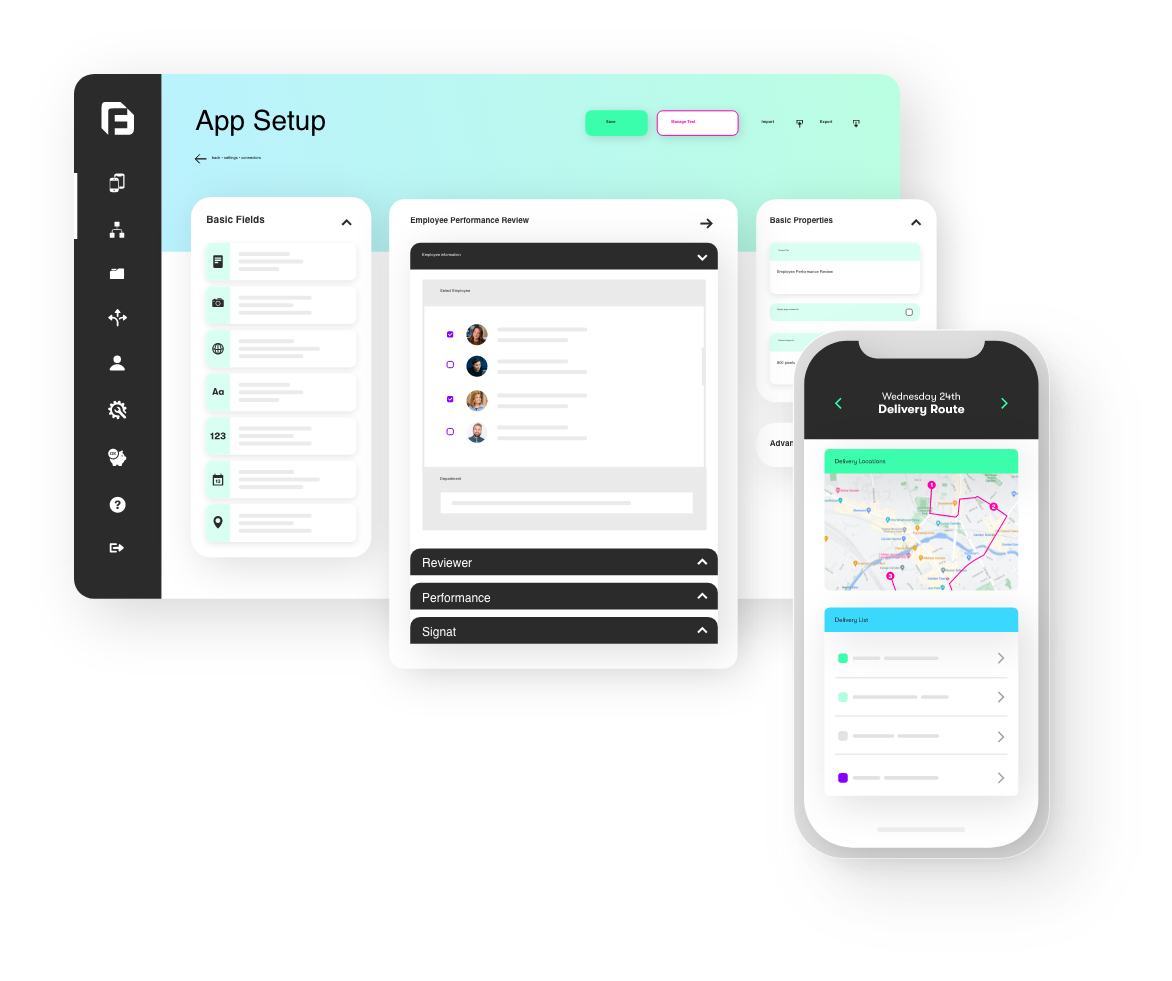A post construction clean up checklist is a detailed document vital for ensuring that all areas of a construction site are fully cleaned, safe, and ready for use.
This checklist breaks down the tasks involved in the cleaning process, allowing you to systematically address each area of the worksite.
It typically includes essential categories such as project information, required tools and equipment, and specific areas that need attention.
You can also incorporate questions to verify that areas have been adequately cleaned.
By using a post construction cleaning checklist, you streamline the cleaning process, ensuring tasks are completed efficiently and in compliance with health and safety standards.
Checklist
Download DOCX Digitise this form
Interior Areas
Living/Common Areas
- Remove Debris (Pick up and dispose of nails, screws, wood chips, and any other leftover materials. Check under furniture, in corners, and along walls for hidden debris).
- Vacuum Dust (Use a vacuum with a HEPA filter to remove dust from floors, walls, and ceilings. Pay extra attention to corners, vents, and other hard to reach areas).
- Wipe Down Surfaces (Use a damp or microfiber cloth to clean countertops, shelves, windowsills, and other flat surfaces. Remove any dust, dirt, or smudges).
- Clean Light Fixtures & Fans (Use a soft brush or vacuum attachment to clean light fixtures and ceiling fans. Make sure no dust or cobwebs are left behind).
- Check Lighting (Turn on all lights to make sure they work. Wipe off any dust or dirt from light bulbs and fixtures).
Bathrooms
- Sanitize Toilets, Showers, & Sinks (Use disinfectant cleaner on all toilets, showers, tubs, and sinks. Scrub thoroughly to remove stains and residue).
- Wipe Down Surfaces (Clean cabinets, counters, and mirrors with a damp cloth. Wipe inside all cabinets and drawers).
- Clean Floors (Sweep, vacuum, and mop to remove dust, dirt, and debris).
- Clean Tile Grout (Use a grout cleaner or scrub brush to remove dirt from between tiles).
Kitchens
- Dust & Wipe Down Surfaces (Dust all shelves, countertops, and other surfaces. Check corners and edges to ensure no areas are missed).
- Clean Inside Cabinets & Appliances (Wipe inside all cabinets and drawers. Clean inside appliances, including the oven, fridge, and microwave).
- Check Cabinet Hardware (Make sure handles, knobs, and hinges are clean and securely attached).
- Clean Floors (Sweep, vacuum, and mop to remove dust and dirt).
- Clean Windows (Wipe down windows, sills, and tracks).
- Clean Fixtures (Sanitise the sink and backsplash. Clean all fixtures and finishes to remove dust, smudges, or water spots).
Bedrooms
- Wipe Down Surfaces (Remove dust and debris from all surfaces to ensure a clean and polished look).
- Vacuum Carpets (Vacuum thoroughly, paying extra attention to edges and corners).
- Clean Furniture & Mirrors (Wipe down any furniture surfaces. Clean mirrors to remove smudges and streaks).
- Check Windows & Tracks (Ensure windows and tracks are free from dust and grime).
- Dispose of Rubbish & Check Cupboards (Remove any leftover rubbish. Inspect cupboards and wipe them down if needed).
Exterior Areas
Entrances and Exits
- Sweep & Clean Entryways (Sweep and remove dirt and debris from porches, patios, and entryways. Ensure the area looks neat and welcoming).
- Check Doors & Handles (Wipe down door frames and handles. Ensure all handles function properly).
- Inspect & Clean Lighting Fixtures (Clean light fixtures to remove dust and dirt. Check that all lights are working for safety and visibility).
Outdoor Spaces and Landscaping
- Remove Construction Debris (Clear all leftover materials, debris, and waste from outdoor areas).
- Clean Outdoor Furniture (Wipe down and clean any outdoor furniture to ensure it’s ready for use).
- Sweep Pathways & Driveways (Sweep and remove dirt, dust, and debris to maintain a tidy and inviting appearance).
- Trim Overgrown Plants & Hedges (Trim any overgrown plants, bushes, or hedges for a well-maintained landscape).
- Check & Secure Rubbish Bins (Ensure rubbish bins are clean and properly placed).
Why Bother With A Post Construction Clean Up Checklist?
A post construction cleaning checklist ensures health and safety is being met.
This checklist identifies and eliminates hazardous materials, including dust, debris, and sharp objects, making the space safe for occupants. By removing these potential dangers, you protect the wellbeing of those who will use the building.
The checklist also maintains quality and aesthetic appeal. It ensures thorough cleaning throughout all areas of the property, enhancing the overall visual presentation and preserving the construction quality.
Tasks include polishing surfaces, cleaning fixtures, and ensuring every space is spotless, contributing to a polished final look.
It organises the cleaning process into manageable phases. The checklist divides tasks into categories such as rough cleaning, light cleaning, and final deep cleaning, streamlining the entire cleaning operation.
You can systematically address every aspect of the site, ensuring no detail is overlooked.
By employing a structured checklist, you promote efficiency and thoroughness in the clean up process.
It directs focus on each area that requires attention, ensuring a comprehensive clean and preparing the property for safe occupancy.
Tips for Creating Your Own Checklist
Assess the Site First
Before diving into the clean up, assess the construction site.
Identify areas needing extra attention and spot potential hazards, like exposed nails or sharp edges. Confirm that all electrical outlets and light fixtures function correctly.
Create a Detailed Checklist
Ensure each item on your checklist covers specific areas of the site.
Include hard to reach spots where dust and debris accumulate, alongside common areas like walls, floors, light switches, and fixtures.
Delegate Tasks
Improve efficiency by assigning specific cleaning tasks to individual team members.
By asking each team member to initial the tasks upon completion, you enhance accountability and streamline the process.
Prioritise Safety
Include safety information and protocols in your checklist.
Ensure that all team members wear protective gear during the clean up to minimise risk of injury from sharp objects or hazardous materials.
Utilise Dry Cleaning Methods First
Start with dry cleaning tasks, such as sweeping and dusting, to remove loose debris.
This initial step helps prepare the space for more thorough wet cleaning, preventing dirt from settling on clean surfaces.
Follow a Top-to-Bottom Cleaning Approach
Maintain a systematic approach by starting from the top of the space and working your way down.
Clean ceilings, light fixtures, and vents before tackling walls and floors, ensuring that dust and debris fall to areas that will be cleaned last.
Utilise Appropriate Cleaning Supplies
Gather all necessary cleaning supplies before starting.
Use heavy duty trash bags for debris, various types of brooms, a vacuum cleaner, and an all-purpose cleaner to effectively manage the clean up process.
Document the Cleaning Process
Keep records of the cleaning process by annotating images of inspected areas.
Documenting progress provides valuable context during inspections and ensures transparency in the clean up efforts.
Schedule Regular Maintenance
After completing the initial clean up, schedule regular maintenance checks.
This step helps maintain the cleanliness and functionality of the space, ensuring it remains safe for occupancy.
Implementing these tips enhances the effectiveness of your post construction clean up checklist, leading to a thorough and efficient cleaning process.
Fed Up of Losing Your Checklists?
There’s nothing worse than getting back to your office and scrambling around for the checklist you need to hand in.
“Where is that blasted paper?!”
Or worse, the wind sweeps it out of your hands and drops it in a muddy puddle.
A post construction clean up checklist keeps everyone safe, but it’s useless if it’s lost or no one can read it.
Switching from paper to a digital checklist maintains sanity by reducing errors and improving efficiency.
With real time updates, teams can track progress instantly, eliminating the risk of misplaced paperwork or miscommunication.
Digital checklists also enhance accountability, allowing team members to log completed tasks with timestamps and signatures.
Compliance becomes easier, as regulatory requirements can be built in, and reports generated instantly when needed.
Plus, with everything stored in one secure location, retrieving past records is quick and hassle free.
Your team can even go straight home instead of dropping by the office before clocking off!
If you’re fed up with losing vital paperwork, it’s time to digitise.


